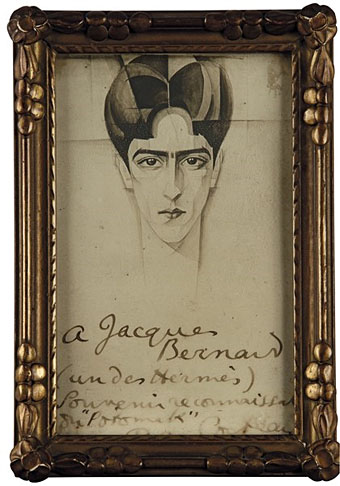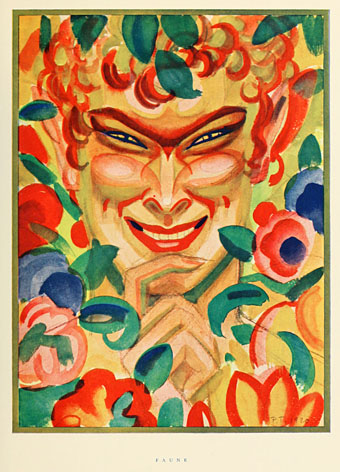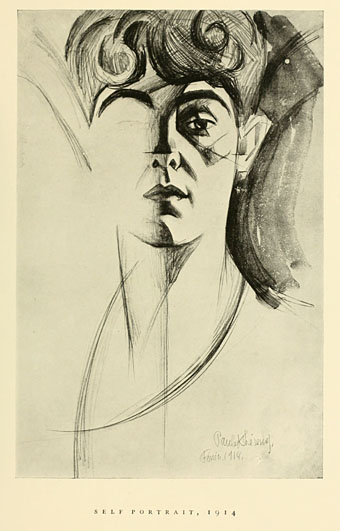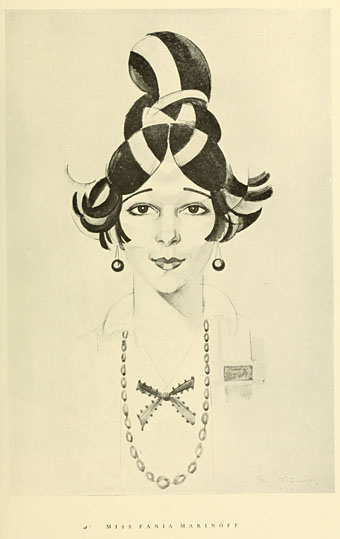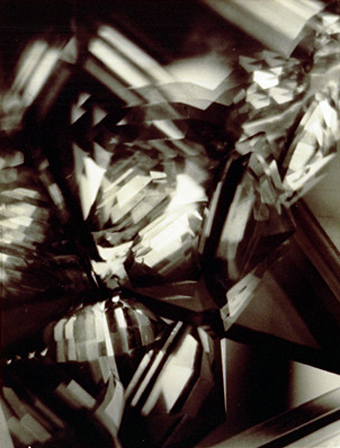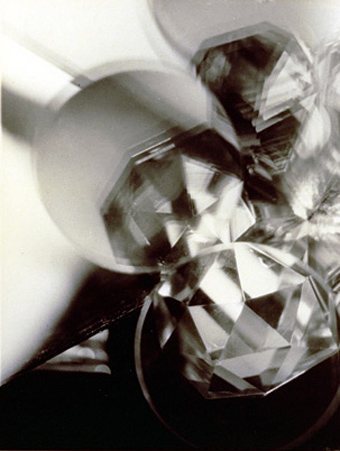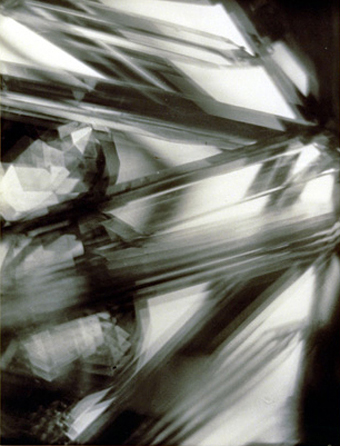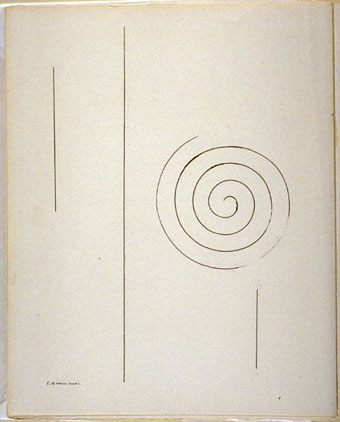
Portrait of James Joyce (1929) by Constantin Brancusi.
A post for Bloomsday. Joyce’s writing was always concerned more with words and phonics than with the appearance of things—understandable given his failing eyesight—but throughout his life he was a persistently attractive subject for portraits and caricatures. This was partly a consequence of being surrounded by artists but it’s also the case that the figure he cut as a man, especially in his younger years, is striking enough to be recognisable in a hasty sketch as much as a study in oils. Prior to John Lennon, Joyce’s round spectacles are the most famous in the arts of the 20th century; when added to a high forehead, a trim moustache and beard, a broad-brimmed hat and a lanky figure you have a subject that even a non-caricaturist such as myself was able to deal with when drawing the Reverbstorm series.
I’ve limited the examples here to portraits produced when Joyce was still alive. There are further examples to be found (the Augustus John is one of a series), while those produced after Joyce’s death proliferate without end.
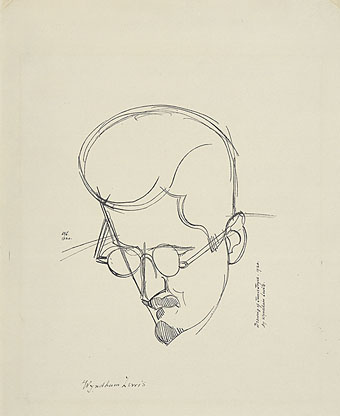
Portrait of James Joyce (1920) by Wyndham Lewis.
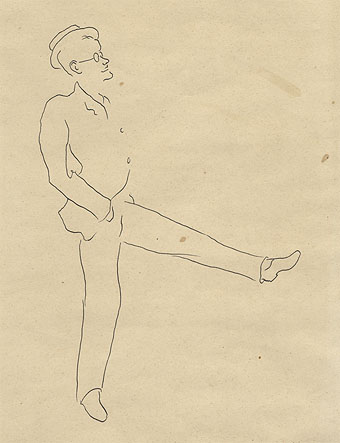
Joyce at Midnight (c. 1930) by Desmond Harmsworth.
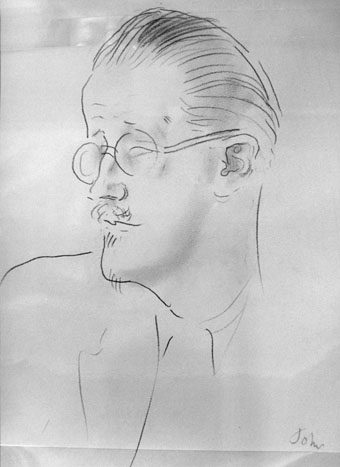
James Joyce (1930) by Augustus John.
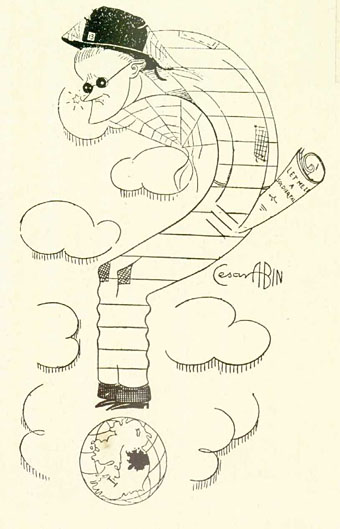
James Joyce (1932) by César Albin.
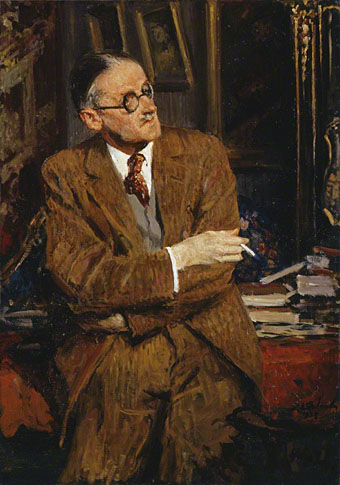
James Joyce (1935) by Jacques-Emile Blanche.
Previously on { feuilleton }
• The Labyrinth
• The Duc de Joyeux
• Dubliners
• Covering Joyce
• James Joyce in Reverbstorm
• Joyce in Time
• Happy Bloomsday
• Passages from James Joyce’s Finnegans Wake
• Books for Bloomsday

